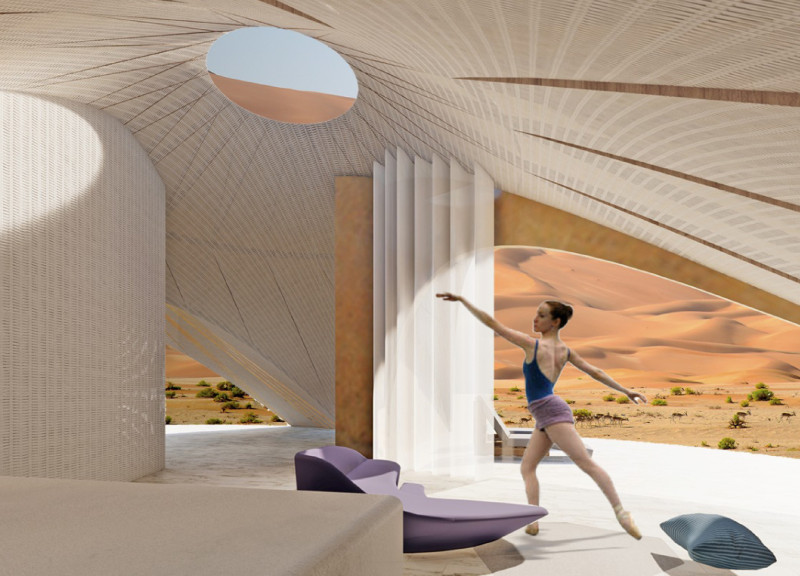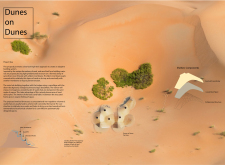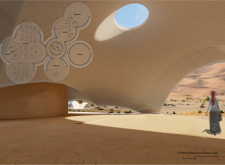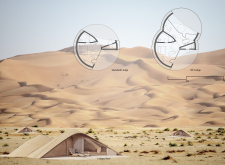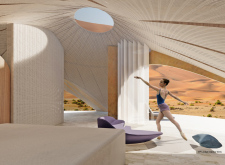5 key facts about this project
The project "Dunes on Dunes" is located in a dry desert landscape, focusing on a building system that connects with the natural environment. It features a main hub along with a series of lodges that are designed to blend into their surroundings. The shapes of these structures are inspired by the gentle curves of sand dunes, and together they create a visual harmony with the landscape. The main goal of the design is sustainability and efficiency while providing an experience for visitors that is both engaging and respectful of the natural world.
Materials and Structure
A distinctive aspect of the design is the use of a lightweight prefabricated structure placed on a mound of sand. This structure is covered by a strong fabric membrane, which is then layered with a thin coating of sand to protect it from erosion. The choice of materials reflects a thoughtful connection to the local context, promoting durability without compromising aesthetics.
Interior and Spatial Experience
Inside, the design incorporates a loose sand fabric that helps create a warm, inviting atmosphere. The layout encourages natural movement and interaction among visitors, fostering a connection with the surrounding environment. The structure takes advantage of the natural angle of sand, allowing for creative forms that maintain stability. This open arrangement enhances the experience of being in sync with the landscape.
Computational Design Techniques
The project employs advanced programming methods to produce unique volumetric vault shapes. This approach addresses the challenges of traditional construction while allowing for intricate designs. By using these computational techniques, the design achieves a high level of efficiency and reduces material waste during construction. The final result showcases an environmentally aware methodology that aligns with contemporary architectural practices.
The layering of materials stands out, with fiber membranes and geo binders providing strength and adaptability. These elements come together to create a sense of fluidity that mirrors the shifting sand dunes around them. This relationship between the architecture and the landscape results in a space that feels alive, reflecting both the beauty and the harshness of the desert.


